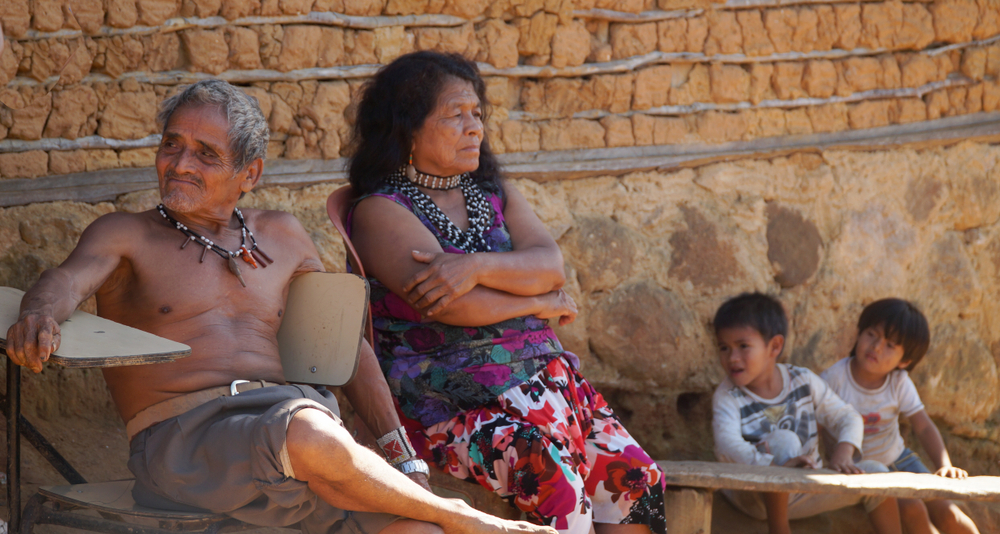
To the older generation of the Paiter Surui, the COVID-19 pandemic looks familiar.
The Indigenous people who inhabit the border of the Brazilian states of Rondônia and Mato Grosso suffered hundreds of deaths from measles and other infectious diseases in the decades after they first made contact with non-Indigenous people in 1969. The survivors "already experienced what is happening in the world today with the coronavirus," says Rubens Naraikoe Surui, a young Indigenous leader.
Now, as the number of coronavirus cases ramps up in Brazil, the Pater Surui and other Indigenous people worry that they could be hard hit. So far, 16 members of such groups are known to have had COVID-19 infections, and three have died: a 15-year-old Yanomami boy, a 78-year-old Tikuna man, and a 44-year-old Kokama woman.
The region is ripe for further spread. The state of Amazonas, where most Indigenous communities are, currently has the most cases per capita in Brazil. Manaus, the state capital, has more than 1500 confirmed cases and 106 deaths, and its health care system is on the verge of collapse, according to local authorities. Two emergency hospitals are being built in a race against time.
Although Indigenous populations were devastated by measles and other infectious diseases in the past, the idea that they are somehow biologically more vulnerable to new diseases is a myth, says Carlos Coimbra, an epidemiologist at the Oswaldo Cruz Foundation in Rio de Janeiro who specializes in indigenous health. "There's no scientific basis to support that," Coimbra says. Anytime a new virus enters a population that is "immunologically naïve," as happened with measles and the Paiter Surui, it will spread rapidly. Today vaccines and regular contact with non-Indigenous people have boosted Indigenous local people's immunity to measles, influenza, and other diseases, Coimbra says. The new coronavirus, on the other hand, is new to the entire world.
What could make these populations unusually vulnerable to COVID-19 are other medical, social, and environmental factors, such a high prevalence of tuberculosis and malaria, a lack of safe drinking water, and malnutrition, Coimbra says. And the Amazon region, where most Indigenous communities live, has few hospitals with intensive care units and a limited number of ventilators, required for the most severe COVID-19 cases.
Isolation may help protect communities. São Gabriel da Cachoeira, a municipality in northwest Amazonas that has the highest numbers of Indigenous people in the country, is now shut down. Local authorities have suspended all passenger transport into the city of just over 40,000 people, which can only be reached by plane or boat, and so far, no COVID-19 cases have been reported there. "We are focusing specifically on prevention. Our goal is to buy time," says Marivelton Barroso, president of the Federation of Indigenous Organizations of Rio Negro, which represents 23 Indigenous ethnicities in the region. Along with other organizations and government bodies, it is distributing food and other basic items to those living in São Gabriel da Cachoeira's rural communities to encourage them to stay where they are.
Similar shutdowns are happening in indigenous territories across the country. In the Uru-Eu-Wau-Wau Indigenous land, in the state of Rondônia, only a limited number of representatives of the Indigenous health services are allowed to enter, and residents are urged to stay in their villages. History may encourage locals to take the advice seriously: In the 1980s, the Uru-Eu-Wau-Wau population was reduced to less than half by respiratory diseases transmitted by non-Indigenous people. COVID-19 "could be fatal for us," says Bitate Uru Eu Wau Wau, coordinator of the Jupaú association of the Uru Eu Wau Wau people.
Brazil's wider response to the coronavirus outbreak has been confusing at best. Most state governors and mayors have decided to follow World Health Organization recommendations to enforce social distancing. But Brazilian President Jair Bolsonaro has repeatedly downplayed the risks of the pandemic and argued in favor of ending the lockdowns. That position has put him at odds with his own health minister, Luiz Henrique Mandetta, who supports distancing measures similar to those implemented in most countries. Brazilian media have speculated that Mandetta could be dismissed in the next few days.
The Brazilian Congress recently approved an emergency aid package of 600 reais ($115) per month per person for the most vulnerable populations. The money should help cut-off Indigenous communities, but many worry the payments might also help spread COVID-19. Like other federal subsidies, the aid can only be collected in cities, forcing Indigenous people to leave their villages and risk becoming infected. To prevent this, the National Indian Foundation will recommend that people stay in their communities for as long as they can, because the money will be available for 90 days.
Despite the worries, Elisângela da Silva, an Indigenous leader from the Baré ethnicity, sees a silver lining: As more people worry about staying safe, some traditional plants and remedies are becoming popular again. Whether they work remains to be seen, of course, but at least "The pandemic is helping us rescue our traditions," da Silva says.
COVID-19 Update: The connection between local and global issues–the Pulitzer Center's long standing mantra–has, sadly, never been more evident. We are uniquely positioned to serve the journalists, news media organizations, schools, and universities we partner with by continuing to advance our core mission: enabling great journalism and education about underreported and systemic issues that resonate now–and continue to have relevance in times ahead. We believe that this is a moment for decisive action. Learn more about the steps we are taking.





